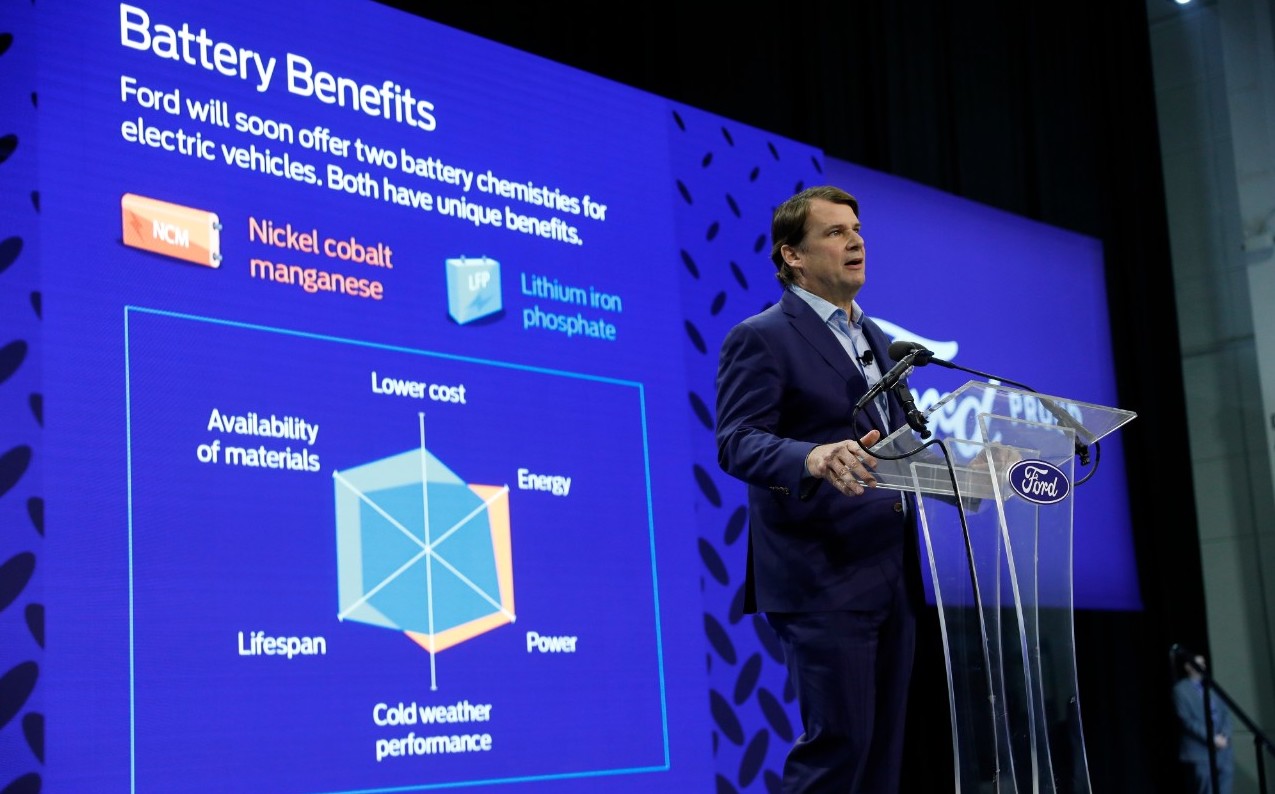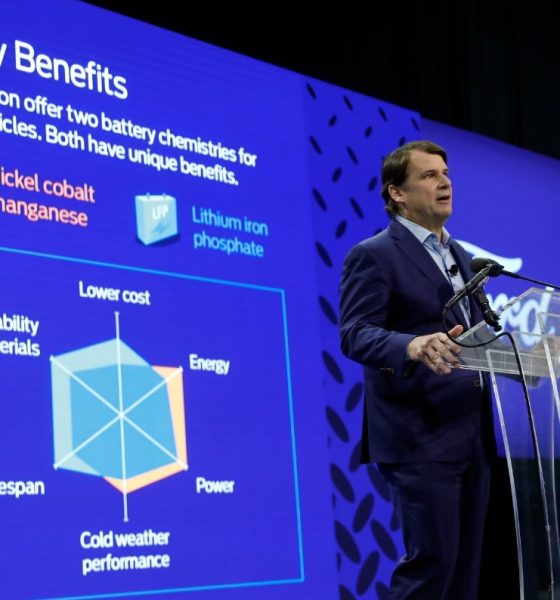General Motors (GM) and Ford will report third-quarter earnings this week, coming amidst the sixth week of ongoing strikes and contract negotiations with the United Auto Workers (UAW) union.
A lot hangs on the reports, and the UAW will likely leverage any bullishness and successes compared to Wall Street expectations shared by the automakers to demand further concessions in contract negotiations, as CNBC points out in a Sunday report. On the other hand, the companies could scare off investors if the impacts of UAW labor efforts or general bearishness on guidance are evident.
In data from LSEG (formerly Refinitiv), Wall Street expectations predict that GM will report earnings of $1.88 per share in Q3, while they estimate that Ford will report $0.45 per share in the same quarter.
GM will release its Q3 2023 financial results on Tuesday at 6:30 a.m. ET, according to the company’s website. Following the meeting, GM will also hold a conference call at 8:30 a.m. ET.
Ford is set to announce its Q3 2023 financial results on Thursday, starting at 4:05 p.m. ET, according to a press release. The webcast for the online event will be available here, and the automaker will hold an earnings call afterward at 5:00 p.m. ET.
Throughout the contract negotiations, the UAW has pulled from earnings reports and public statements from executives of the “Big Three” of Detroit, which includes Ford, GM and Chrysler-parent Stellantis.
“When you’re in bargaining you want to use every piece of news that’s in your favor and bring it up and bring it to the public and to the table,” says Art Wheaton, Cornell University professor of labor at the Worker Institute. “If GM, Ford and Stellantis are still very profitable for the third quarter, [UAW’s] going to claim that, ‘They’re being too cheap in bargaining, and they should give us more.’”
Despite some recent concessions from the automakers in contract negotiations, UAW President Shawn Fain noted in a statement on Friday that the companies were all “extremely profitable,” adding that there is still “more to be won.” The statements came just as Ford laid off an additional 364 workers in two states.
UAW President: Tesla workers are union “members of the future”
JPMorgan has estimated that the UAW strikes have cost Ford $145 million in Q3 before interest and taxes, while the firm estimates it has cost GM $191 million. In Q4 so far, the firm thinks losses have increased to $517 million and $507 million for Ford and GM, respectively.
The estimates come after Ford workers walked off the job at the automaker’s highly profitable Kentucky Truck Plant earlier this month, which produces the company’s F-Series Super Duty pickup, the Expedition and the Lincoln Navigator SUV.
Additionally, if labor efforts are successful, many analysts predict that labor costs will be passed along to the price of the vehicles and thus to consumers. Last Monday, Wolfe Research analyst Rod Lache predicted that labor costs would jump by $3,000 to $4,000 per vehicle based on the latest proposals to the UAW. At the same time, he expects competitor costs to increase by $2,500 to $3,000.
“This could compound other challenges that the OEMs [original equipment manufacturers] face (e.g. competitiveness in batteries, distribution, design),” Lache said. “And we also worry that the OEMs may still not fully appreciate the long-term risks associated with UAW’s new tack — including bargaining in public, social media, and populism. The Automakers appear to be struggling to adjust to this reality.”
The news comes after Tesla reported its Q3 earnings last week, posting a non-GAAP earnings per share of $0.53, beneath Wall Street expectations of $0.64 per share. Additionally, the non-union automaker posted $23.35 billion in revenue during the quarter, though analysts expected the company to report a revenue of $23.9 billion.
You can find our live coverage of Tesla’s Q3 2023 earnings call here.
What are your thoughts? Let me know at zach@teslarati.com, find me on X at @zacharyvisconti, or send your tips to us at tips@teslarati.com.

News
Tesla starts showing how FSD will change lives in Europe
Local officials tested the system on narrow country roads and were impressed by FSD’s smooth, human-like driving, with some calling the service a game-changer for everyday life in areas that are far from urban centers.

Tesla has launched Europe’s first public shuttle service using Full Self-Driving (Supervised) in the rural Eifelkreis Bitburg-Prüm region of Germany, demonstrating how the technology can restore independence and mobility for people who struggle with limited transport options.
Local officials tested the system on narrow country roads and were impressed by FSD’s smooth, human-like driving, with some calling the service a game-changer for everyday life in areas that are far from urban centers.
Officials see real impact on rural residents
Arzfeld Mayor Johannes Kuhl and District Administrator Andreas Kruppert personally tested the Tesla shuttle service. This allowed them to see just how well FSD navigated winding lanes and rural roads confidently. Kruppert said, “Autonomous driving sounds like science fiction to many, but we simply see here that it works totally well in rural regions too.” Kuhl, for his part, also noted that FSD “feels like a very experienced driver.”
The pilot complements the area’s “Citizen Bus” program, which provides on-demand rides for elderly residents who can no longer drive themselves. Tesla Europe shared a video of a demonstration of the service, highlighting how FSD gives people their freedom back, even in places where public transport is not as prevalent.
What the Ministry for Economic Affairs and Transport says
Rhineland-Palatinate’s Minister Daniela Schmitt supported the project, praising the collaboration that made this “first of its kind in Europe” possible. As per the ministry, the rural rollout for the service shows FSD’s potential beyond major cities, and it delivers tangible benefits like grocery runs, doctor visits, and social connections for isolated residents.
“Reliable and flexible mobility is especially vital in rural areas. With the launch of a shuttle service using self-driving vehicles (FSD supervised) by Tesla in the Eifelkreis Bitburg-Prüm, an innovative pilot project is now getting underway that complements local community bus services. It is the first project of its kind in Europe.
“The result is a real gain for rural mobility: greater accessibility, more flexibility and tangible benefits for everyday life. A strong signal for innovation, cooperation and future-oriented mobility beyond urban centers,” the ministry wrote in a LinkedIn post.
News
Tesla China quietly posts Robotaxi-related job listing
Tesla China is currently seeking a Low Voltage Electrical Engineer to work on circuit board design for the company’s autonomous vehicles.

Tesla has posted a new job listing in Shanghai explicitly tied to its Robotaxi program, fueling speculation that the company is preparing to launch its dedicated autonomous ride-hailing service in China.
As noted in the listing, Tesla China is currently seeking a Low Voltage Electrical Engineer to work on circuit board design for the company’s autonomous vehicles.
Robotaxi-specific role
The listing, which was shared on social media platform X by industry watcher @tslaming, suggested that Tesla China is looking to fill the role urgently. The job listing itself specifically mentions that the person hired for the role will be working on the Low Voltage Hardware team, which would design the circuit boards that would serve as the nervous system of the Robotaxi.
Key tasks for the role, as indicated in the job listing, include collaboration with PCB layout, firmware, mechanical, program management, and validation teams, among other responsibilities. The role is based in Shanghai.
China Robotaxi launch
China represents a massive potential market for robotaxis, with its dense urban centers and supportive policies in select cities. Tesla has limited permission to roll out FSD in the country, though despite this, its vehicles have been hailed as among the best in the market when it comes to autonomous features. So far, at least, it appears that China supports Tesla’s FSD and Robotaxi rollout.
This was hinted at in November, when Tesla brought the Cybercab to the 8th China International Import Expo (CIIE) in Shanghai, marking the first time that the autonomous two-seater was brought to the Asia-Pacific region. The vehicle, despite not having a release date in China, received a significant amount of interest among the event’s attendees.
Elon Musk
Elon Musk and Tesla AI Director share insights after empty driver seat Robotaxi rides
The executives’ unoccupied tests hint at the rapid progress of Tesla’s unsupervised Robotaxi efforts.

Tesla CEO Elon Musk and AI Director Ashok Elluswamy celebrated Christmas Eve by sharing personal experiences with Robotaxi vehicles that had no safety monitor or occupant in the driver’s seat. Musk described the system’s “perfect driving” around Austin, while Elluswamy posted video from the back seat, calling it “an amazing experience.”
The executives’ unoccupied tests hint at the rapid progress of Tesla’s unsupervised Robotaxi efforts.
Elon and Ashok’s firsthand Robotaxi insights
Prior to Musk and the Tesla AI Director’s posts, sightings of unmanned Teslas navigating public roads were widely shared on social media. One such vehicle was spotted in Austin, Texas, which Elon Musk acknowleged by stating that “Testing is underway with no occupants in the car.”
Based on his Christmas Eve post, Musk seemed to have tested an unmanned Tesla himself. “A Tesla with no safety monitor in the car and me sitting in the passenger seat took me all around Austin on Sunday with perfect driving,” Musk wrote in his post.
Elluswamy responded with a 2-minute video showing himself in the rear of an unmanned Tesla. The video featured the vehicle’s empty front seats, as well as its smooth handling through real-world traffic. He captioned his video with the words, “It’s an amazing experience!”
Towards Unsupervised operations
During an xAI Hackathon earlier this month, Elon Musk mentioned that Tesla owed be removing Safety Monitors from its Robotaxis in Austin in just three weeks. “Unsupervised is pretty much solved at this point. So there will be Tesla Robotaxis operating in Austin with no one in them. Not even anyone in the passenger seat in about three weeks,” he said. Musk echoed similar estimates at the 2025 Annual Shareholder Meeting and the Q3 2025 earnings call.
Considering the insights that were posted Musk and Elluswamy, it does appear that Tesla is working hard towards operating its Robotaxis with no safety monitors. This is quite impressive considering that the service was launched just earlier this year.










